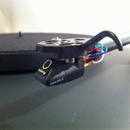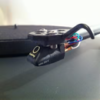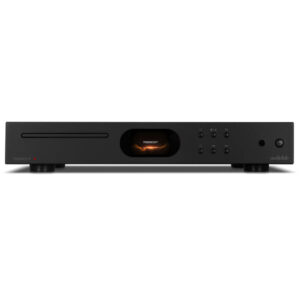Goldring 1012GX Moving Magnet Phono Cartridge
$549.00
This hand-built cartridge uses the acclaimed Gyger II nude diamond stylus. A fine-line elliptical type with a 6 µm small radius it gives smooth, extended highs, low distortion and reproduces a highly detailed and dynamic sound. Advanced diamond tip polishing ensures excellent tracking ability and reduces record wear. Because it fills the record groove more completely due to its larger major radius, the Gyger II represents a major upgrade over normal elliptical stylus types.
Features
LOW MASS POCAN® BODY
HIGH EFFICIENCY MAGNETIC CIRCUIT
Finely etched mu-metal is laminated to form the pole pieces around which are fitted two formerless coils of four thousand turns each. This unique design reduces mass and also makes for a very efficient magnetic circuit producing a higher than average output. This construction also reduces the loss at high frequencies inherent in conventional designs, making for a smooth and extended frequency response.
REDUCED MOVING MASS
The 1000 series uses a unique ultra-low-mass, micro-miniature Alnico V magnet made to a tolerance that can be achieved by no other manufacturer worldwide. Welded to the magnet is a gold plated nickel tie-bar which provides an earth path for vinyl static charge build up and stabilizes the cantilever in unwanted vibrational modes. The whole ultra-low-mass assembly is then mounted in a special butyl rubber polymer with optimized damping characteristics.
EXPERT ADJUSTMENT
The correct setting of stylus azimuth (or horizontal tracking angle) is essential for the maintenance of a proper stereo sound stage. Azimuth is the term used to describe the angle that the vertical centre-line of the stylus makes with the record surface and this must be exactly perpendicular to the record groove. This is not usually a user adjustable parameter on most budget decks and so it is vital that the cartridge leaves the factory with the azimuth precisely set. Badly adjusted azimuth can cause uneven channel balance and increased crosstalk between channels which would severely degrade the stereo image.














